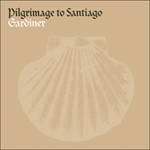Despite the splendour of his publications and despite the early date at which Victoria got his music into print, he was not by the standards of his time prolific. Just twenty Masses have come down to us. Fifteen are ‘parodies’ (Masses based on a pre-existing work), one is freely composed, and four (including two
Requiems) are ‘paraphrase’ Masses, that is to say they are based on plainchant. The
Missa O quam gloriosum is based on Victoria’s own joyful motet of 1572. Tovey called it one of the most perfect ever written. The Mass is concise; it frequently takes over whole portions of the motet and somehow balances great simplicity with a marvellous controlled fervour that is typical of Victoria. It has become the most loved and performed of all his Masses in modern times. It is written in the G mixolydian mode which, in Victoria’s hands, is frequently straight G major. One magical moment of reverent simplicity is the section ‘et incarnatus est’ in the Credo. It is difficult to imagine anything else so brief and effective. Even the Agnus Dei of this Mass is short and just a single setting (here repeated by custom to the final words ‘dona nobis pacem’).
from notes by Bruno Turner © 1984
Malgré la splendeur de ses publications et le jeune âge auquel il fit imprimer sa musique, Victoria n’était pas ce que l’on appellerait un compositeur prolifique. Seules vingt messes nous sont parvenues. Quinze sont des «parodies» (messes fondées sur des œuvres antérieures) une de composition libre et quatre (y compris deux requiems) sont des «paraphrases» c’est à dire fondées sur le plain-chant. La
Missa O quam gloriosum se fonde sur le propre motet joyeux de Victoria, composé en 1572. Tovey l’a appelée l’une des messes les plus parfaites jamais composées. La messe est concise. Elle reprend fréquemment des portions entières du motet et parvient à équilibrer une grande simplicité à une merveilleuse ferveur contrôlée, typique de Victoria. Il s’agit aujourd’hui de sa messe la mieux aimée et la plus souvent interprétée. Elle est écrite dans le mode mixolydien de sol qui entre les mains de Victoria se traduit souvent par un véritable sol majeur. Moment magique de simplicité empreinte de vénération, le «et incarnatus est» du Credo est un modèle absolu de brièveté et d’efficacité. Même l’Agnus Dei est court, et fait l’objet d’un seul arrangement répété ici comme le veut la tradition au son des mots de la fin, «dona nobis pacem».
extrait des notes rédigées par Bruno Turner © 1984
Français: Marie Luccheta
Trotz der Pracht seiner Veröffentlichungen und trotz des frühen Publikationsdatums seiner Werke komponierte Victoria nicht viel gemessen am Standard seiner Zeit. Gerade einmal zwanzig Messen sind uns überliefert. Fünfzehn davon sind „Parodie“-Messen (auf schon existierenden Werken beruhende Messen), eine ist in freier Form und vier (einschließlich der zwei Requien) sind „Paraphrasen“-Messen, was soviel bedeutet, dass sie auf gregorianischen Gesängen basieren. Die
Missa O quam gloriosum beruht auf Victorias eigener freudevoller Motette von 1572. Tovey beschrieb sie als eine der perfektesten Motetten, die jemals geschrieben wurden. Die Messe ist kurz, übernimmt mehrfach ganze Abschnitte aus der Motette und versteht es irgendwie, eine große Einfachheit mit einer wunderbar kontrollierten Inbrunst im für Victoria typischen Gleichgewicht zu halten. Die Messe gehört zu den beliebtesten und am häufigsten aufgeführten Messen Victorias in unserer Zeit. Die Messe steht in der mixolydischen Kirchentonart auf G, das unter Victorias Händen oft in ein einfaches G-Dur abschweift. Ein zauberhafter Moment andächtiger Simplizität ist der Abschnitt „et incarnatus est“ im Credo. Man kann sich kaum etwas vorstellen, das gleichermaßen kurz und überzeugend ist. Selbst das Agnus Dei dieser Messe ist kurz, und es gibt nur eine einzige Vertonung dieses Textes (hier wird sie wie gewöhnlich auf die abschließenden Worte „dona nobis pacem“ wiederholt).
aus dem Begleittext von Bruno Turner © 1984
Deutsch: Elke Hockings


 Pilgrimage to Santiago
Pilgrimage to Santiago
